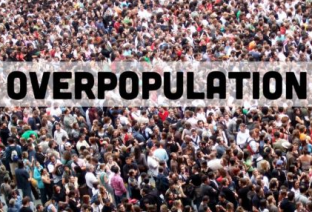A report published in some sections of the Indian Media indicates that in Kerala , the demographics may change, making it a Muslim majority state in about ten years. Of course, this is speculation based on ‘Panchayat Reports’. Hindus still have the highest birth rate. As for Christians, the third group, their population is down, and their birth rates have shrunk.
The reason seems to be that the more educated Hindu and Christian communities are postponing early pregnancies and limiting the number of children. The less educated Muslim population appears to ignore all development communication and advice about planning their families! So while the birth rate of Hindus and Christians dip, the Muslim birth rate grows steadily.
Sustaining the upward growth rate of Muslim population in the state, the recent Vital statistics Report published by the Director of Panchayats is pointing at a steep climb in child birth rate among the Muslim community, almost equalling the rate of the majority Hindu community. While the Muslims who constitute 26.56 percent of the population have attained the birth rate of 41 per cent almost equalling the majority Hindu community’s birth rate of 42.87 per cent, the Christian community’s birth rate has fallen to 15.42 per cent.
Religion-wise analysis of live births reveals that out of the total 5,16,013 live births registered in 2015, 42.87 per cent were Hindu, 41.45 per cent Muslim and 15.42 per cent from Christian community. Around 0.08 per cent of parents were unwilling to disclose their religion. There were 993 children belonging to other religious communities.
As per the 2011 All India Census report, Kerala had a total population of 3.34 crore. Of this male population constituted 1.60 crore and females 1.73 crore. While the Hindus constitute 1.82 crore, Muslim population is pegged at 88.73 lakh and Christians 61.41 lakh. As many as 88,155 persons have not stated their religion.
According to the Vital Statistics Report, the Hindu population was 56.2 per cent in 2001. In 10 years, it went down to 54.73 per cent. The wide gap between the death rate and birth rate will make the Hindu community a minority by 2021.
Early pregnancy among Muslim women and postponing of marriage and motherhood among Hindus and Christians were the major reasons cited for the difference in the birth rate.
While the Christian population in 2011 stood at 18.36 per cent, the child birth rate of Christians stood at 15.42 per cent in 2015. In 2009, the Christian birth rate was 16.62 per cent.
In 2009, the Hindu birth rate stood at 45.51 per cent and Muslim birth rate at 37.61 per cent.
The majority of Hindu and Christian parents have just one child, leading to a sharp fall in their numbers, the report points out.
Highest number of births in June and the lowest in August
In the month-wise distribution of births registered, June has recorded the highest number of births (48,378) followed by November (47,841). The lowest number of births was recorded in August (36,273). According to the report, no live birth by mothers below the age of 15 was reported in 2015.
Under the age group 15-19, Hindu birth rate stood at 1.12, Muslims – 3.33 and Christians – 0.17. Others constitute 0.01 (Total-4.63 per cent)
The report was prepared using vital events registered in the 1,044 registration units under the local self-governments. Out of the total 5,16,013 live births registered during 2015, 35.38 per cent was reported from rural areas and 64.62 per cent from urban areas.
Out of the total live births registered, 51.33 per cent were males, 48.66 per cent females and in 0.01 per cent events, sex is not reported.


